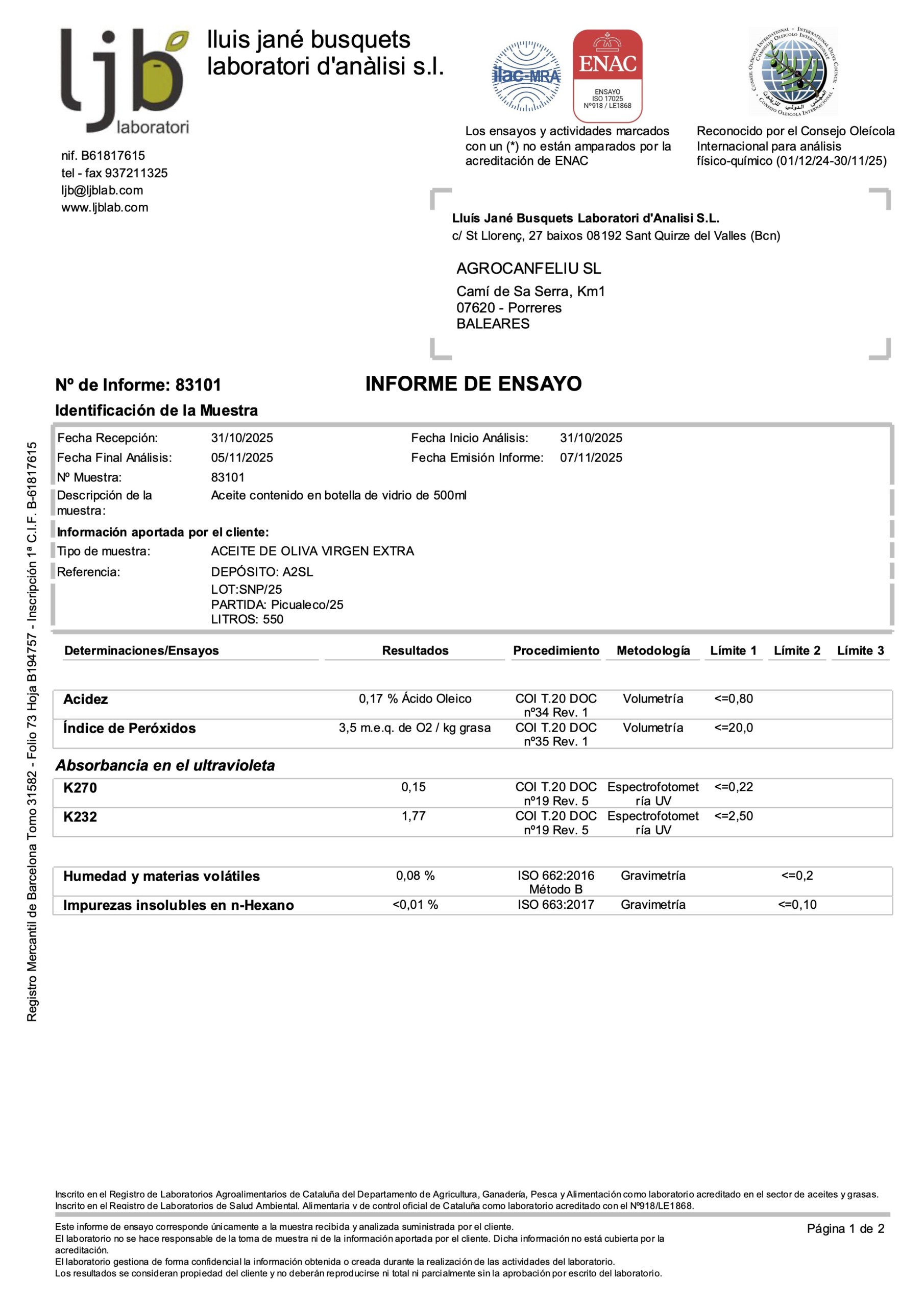Clarifications:
Acidity content: The acidity level is the best-known quality measurement factor for olive oil. In order to determine the acid content, the oil’s proportion of fatty acids is measured. Of course, the less free fatty acids an olive oil contains, the more considerately it has been harvested and pressed, while a somewhat higher acidity content does not, however, imply a lower level of quality. It is only upon the combined verdicts from value assessments that a qualitative evaluation may be reached. Yet there are legal boundary lines: before an olive oil can be sold with the identification of “extra virgin olive oil”, its content of free fatty acids, calculated as oleic acid, must, according to European Regulation Nr. 1234/2007, be no higher than 0.8%.
Peroxide value: The peroxide value (PV) gives an indication regarding the extent to which the olive oil has been exposed to oxidation. In this process, the air’s oxygen transforms fatty acids as well as secondary plant substances in the olive oil. In the case of “extra virgin olive oil” this peroxide number must legally not exceed 20 milliequivalents of oxygen per kilogramme of fat.
K270: When UV light shines through olive oil, not all wavelengths are allowed to penetrate it equally. The opacity for a certain wavelength (colour) in the UV range is also termed absorption. In the laboratory, it is measured with a spectrometer and indicated as “extinction coefficient” (the k-value). The common values amongst these are the K270 and K232 figures. The K270 value states how fresh the olive oil is. It is very low immediately following harvest and rises gradually over time.





